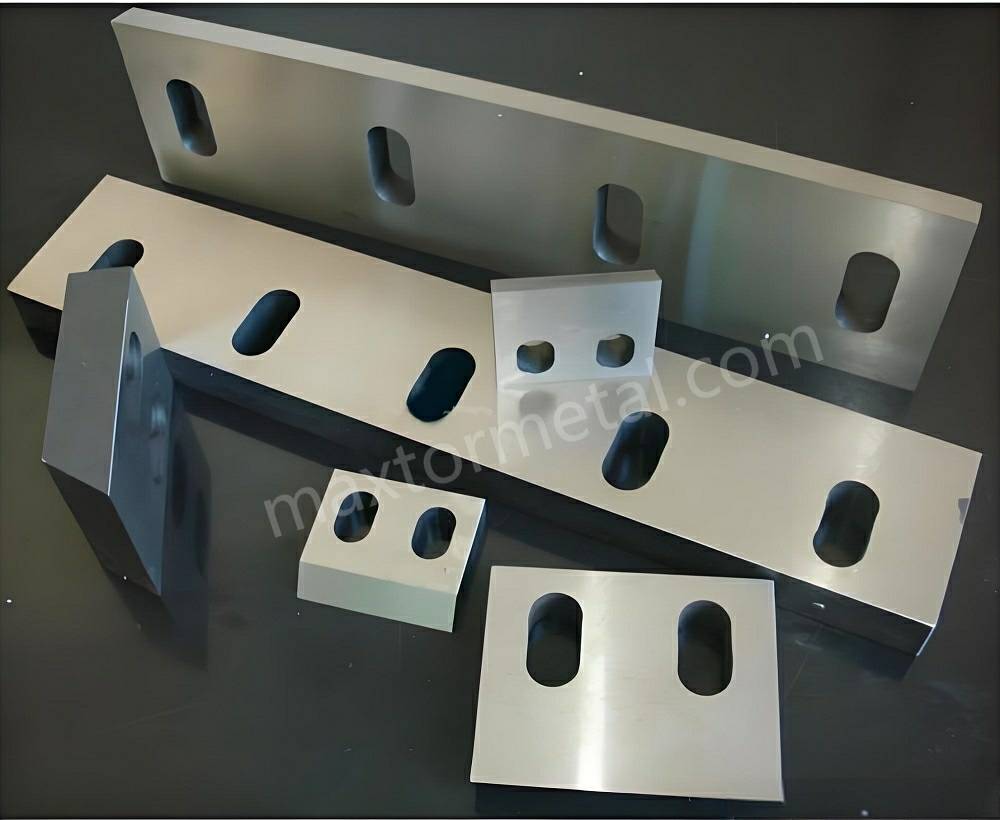
When you need Lâminas de Reposição para Trituradores de Plástico, you have two main options. You can choose OEM blades or aftermarket blades. This decision can impact your machine’s performance and your overall costs. OEM blades fit perfectly, offer high quality, and come with a warranty. Aftermarket blades are usually less expensive and more readily available, sometimes featuring new designs. However, their quality can vary. Consider factors like fit, blade durability, warranty, and value before making your choice.
Principais conclusões
- OEM blades fit just right. They last a long time. They have good warranties and support. This helps your machine work well.
- Aftermarket blades cost less money. They give you more choices. Some have special features. But quality and fit are not always the same. Pick sellers you can trust.
- Measure your blade carefully. Check the fit details. This stops machine damage. It keeps you safe. It also saves you from losing time and money.
- Think about the first price and the value over time. Look at how long the blade lasts. Think about machine downtime too. This helps you choose the best blade.
- Custom blades from skilled makers like Nanjing Metal help machines work better. They cut down on waste. They fix special machine problems.
Understanding Plastic Crusher Replacement Blades
OEM Parts Overview
When you pick OEM parts, you get blades made by the same company as your machine. These blades fit your machine because they match its size and shape. OEM blades use strong materials like manganese steel alloys. This makes them tough and helps them last longer. You can trust these blades to work well every time. OEM parts often come with a warranty and help from the company. If you have a problem, you can get support. These blades meet strict rules for safety and quality, so your machine is less likely to break.
- OEM parts are made to fit your machine and work well.
- They are built to handle hard jobs, so they last longer.
- You can get help from the company for putting them in and taking care of them.
- OEM parts usually have a warranty to protect you from problems.
Aftermarket Replacement Overview
Aftermarket blades are made by other companies, not the original one. These blades usually cost less and are easier to buy. Some aftermarket blades have new shapes or use different materials. You might not find these options with OEM blades. But the quality and fit of aftermarket blades can be different. You should check if the company is good and what the blade is made of. Some aftermarket blades use carbon tool steel, which is cheaper but does not last as long. Others use high-speed steel or alloy tool steel, which are stronger and last longer.
Tip: Always check if the material and shape of aftermarket blades match what your machine needs before you buy.
Principais diferenças
There are some big differences between OEM and aftermarket blades. The table below shows the main things to look at:
| Recurso | OEM Parts | Aftermarket Replacement |
|---|---|---|
| Fabricante | Original equipment manufacturer | Third-party companies |
| Fit and Compatibility | Exact match | May vary |
| Qualidade dos materiais | High, consistent | Can range from low to high |
| Warranty and Support | Usually included | Varies by supplier |
| Preço | Higher upfront | Lower upfront |
| Inovação | Follows original design | May offer new features |
The best blade for you depends on your budget and machine. It also depends on how long you want the blade to last. The material of the blade changes how long it works and how well it cuts. For example, tungsten carbide blades cost more but last a long time. This can save you money later. Carbon tool steel blades are cheaper but wear out faster. Think about how much you want to spend now and how much you want to save later when you pick your plastic crusher replacement blades.
Pros and Cons of OEM Parts
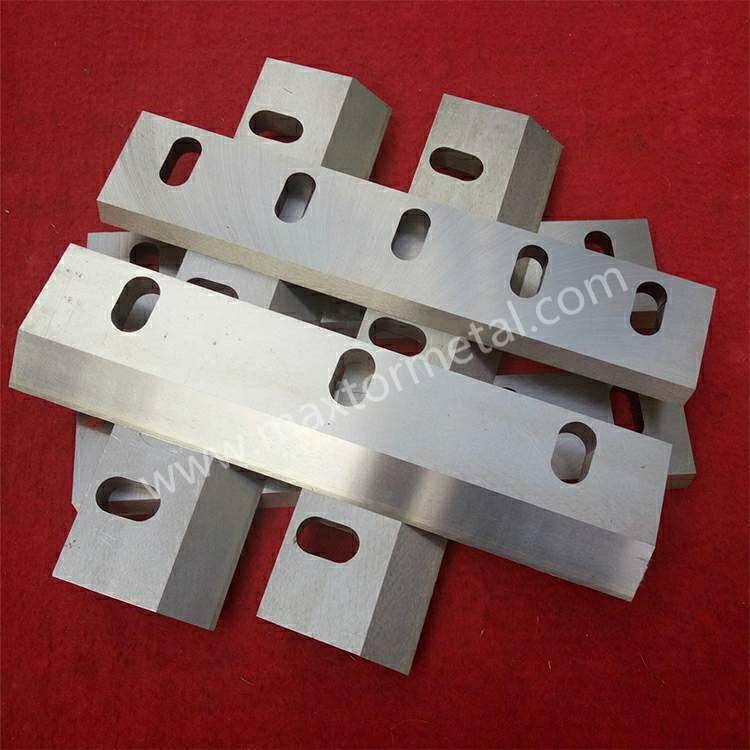
OEM Advantages
Guaranteed Quality and Reliability
OEM parts are made by the same factory as your machine. They use strong materials and follow strict rules. You can trust these parts to work well every time. Good OEM parts help your machine run safely and smoothly. You do not have to worry about weak parts or bad materials.
Note: OEM parts go through many tests before you get them. This helps you feel sure they will work well.
Perfect Fit and Compatibility
OEM parts are made to fit your machine exactly right. The factory uses the machine’s original plans to make each blade. You do not need to worry about the size or shape being wrong. This makes putting in the blade fast and easy. A perfect fit helps your machine work its best.
- You do not have to deal with blades that are too loose or tight.
- You lower the risk of hurting your machine.
- You keep your work moving without stopping.
Manufacturer Warranty and Support
OEM parts often come with a warranty. If something goes wrong, you can ask the factory for help. Experts who know your machine can answer your questions. They help you fix problems fast. This means your machine does not stop working for long.
Desempenho consistente
You want your machine to work the same way every day. OEM parts help make this happen. Each new blade works just like the last one. You get good cutting and smooth work every time. This helps you plan your jobs and finish on time.
Access to Latest Technical Updates
OEM factories often make their parts better over time. When you buy OEM parts, you get the newest updates. These might be stronger materials or new designs. You get the latest technology without changing your whole machine.
OEM Disadvantages
Higher Upfront Cost
OEM parts usually cost more than other choices. You pay for the brand, the careful checks, and the help you get. The price is higher, especially for big or special blades. You need to think if the extra money is worth it.
Longer Lead Times
Sometimes, you have to wait longer for OEM parts. The factory might need to make the part or ship it from far away. If the part is not ready, you could have delays. This can slow down your repairs or work.
Limited Selection and Customization
OEM parts mostly come in regular shapes and sizes. If you need a special blade, you might not find it from the factory. There are not many ways to change OEM parts. You may need to look somewhere else for specific needs.
Potentially Less Innovation Compared to Some Aftermarket Options
OEM parts stick to the old design. Some other companies try new shapes or materials first. If you want the newest features, you might not find them in OEM parts right away.
Tip: Always think about the good and bad points before you pick a new blade. OEM parts have many good things, but you should also think about your money, time, and specific needs.
Pros and Cons of Aftermarket Replacement
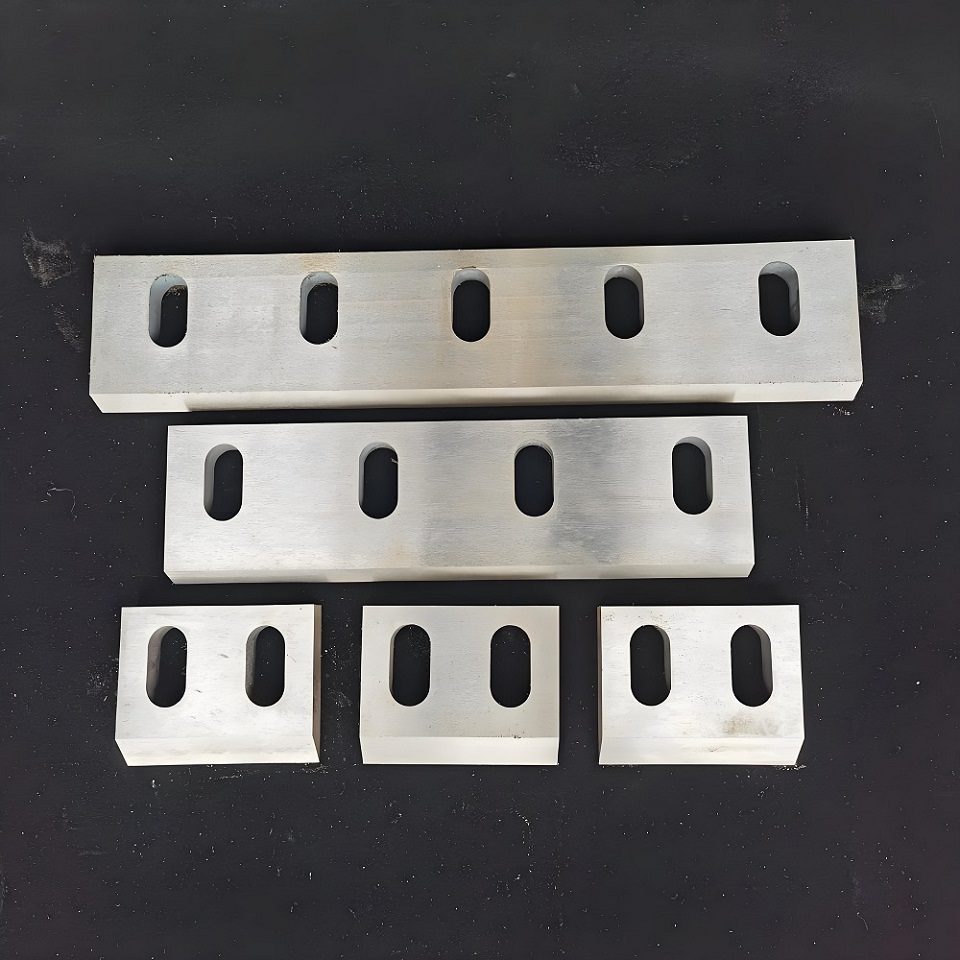
Aftermarket Advantages
Lower Upfront Cost
Aftermarket replacement blades usually cost less than OEM parts. Many people like the lower price, especially if they need to save money. Buying aftermarket parts helps you spend less each time you need new blades. If you have a big business or change blades a lot, saving money matters even more.
Greater Availability and Faster Delivery
You can often get aftermarket blades faster than OEM ones. Many sellers have these parts ready to ship right away. This means you do not have to wait long for your order. There are a few reasons for this:
- Factories in Asia-Pacific, Latin America, and the Middle East make blades nearby, so shipping is quicker.
- Local factories use good machines and labs to make blades fast and keep them high quality.
- Companies work together around the world to make more blades and stop delays.
- Local service centers and help from the government keep things moving quickly.
- Making blades close to home is better for the environment because it cuts down on long trips.
This big network helps you get the blades you need fast, so your machines do not stop for long.
Wide Range of Options
Aftermarket sellers have many kinds of blades. You can pick from lots of shapes, sizes, and materials. This helps you find the best blade for your machine. If you use special machines or different plastics, you can still find a good aftermarket blade.
Customization Flexibility
You can ask for special features when you buy aftermarket blades. Many sellers will make blades just the way you want. This helps you fix special problems or make your machine work better. New studies show that companies now use strong materials like alloy composites and ceramic coatings. They also use CAD and CNC machines to make special shapes and angles. These changes help you get blades that last longer and work better for your job.
Note: It is easier to get custom blades from aftermarket sellers because they can change their designs quickly for you.
Potential for Innovative Features or Materials
Aftermarket companies often try new ideas first. They use new materials and designs before OEMs do. Some companies use strong steel, tungsten carbide, or ceramic composites to make blades tougher. Some new blades even have smart sensors to check how much they are used. You can also find blades with special shapes, like hooks or jagged edges, to cut better. These new ideas help you keep up with new recycling rules and harder jobs.
Aftermarket Disadvantages
Inconsistent Quality and Performance
The quality of aftermarket blades is not always the same. Some sellers use great materials and check their work, but others do not. This can make your machine work worse. If you buy a bad blade, it might not last long or work well.
Potential Fit and Compatibility Issues
Aftermarket blades do not always fit your machine just right. If the blade does not fit, it can be hard to put in. A bad fit can make your machine wear out faster or even break. Always check the size and shape before you buy a new blade.
Limited or Unreliable Warranty and Support
Many aftermarket sellers do not give as much warranty as OEMs. Some do not help at all if you have a problem. If your blade breaks, you might not get help fast. This can make your machine stop working longer or cost you more money.
Uncertain Long-Term Durability
Not all aftermarket blades last as long as OEM blades. Some wear out faster, especially if they are made from cheaper stuff. You might have to buy new blades more often, which can cost more over time.
Risk of Sourcing from Unverified Suppliers
It is risky to buy from sellers you do not know. Some companies sell fake or bad blades. These can hurt your machine or break quickly. Always buy from sellers you trust when you need aftermarket blades.
Tip: Ask for reviews or references before you buy aftermarket blades. This helps you make sure you get good quality and the right fit.
Fit and Compatibility
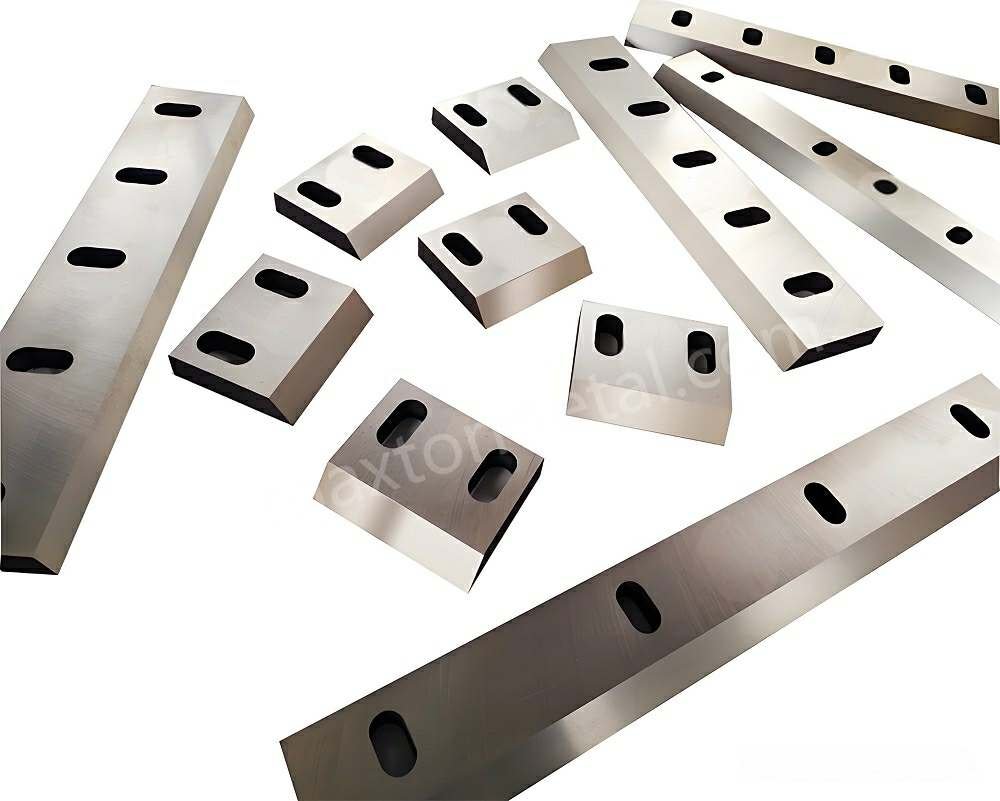
Making Sure the Blade Fits
Why Measuring Matters
You must measure your plastic crusher blades before buying new ones. The length, width, thickness, and hole spots must match your machine. Even a tiny mistake can cause trouble. If the blade is too big or small, it will not fit right. This can make cutting bad or even break your machine. Always use a ruler or caliper to check the size. Write down the numbers and check them again before you buy.
OEM vs Aftermarket Blade Fit
OEM blades fit best because the maker designs them for your machine. You can trust each blade to match the original size and shape. This makes putting in the blade easy and helps your machine work well. Aftermarket blades can fit too, but you need to check the details. Some aftermarket sellers use different sizes or materials. If you do not compare the specs, you might get a blade that does not fit right. Always ask for a drawing or technical sheet from the seller.
How to Install Blades Safely
When you put in a new blade, follow your machine’s manual. Clean the area and take away old dirt. Put the blade in the right spot and tighten the bolts evenly. Do not force the blade into place. If it does not fit, stop and check the size again. Use the right tools and wear safety gloves. After you finish, turn the machine by hand to see if the blade moves freely. This helps you stay safe and keeps your machine working.
Tip: If you are not sure how to install the blade, ask a technician or your supplier for help.
Common Blade Fit Problems
You may have some problems when putting in a new blade:
- The blade does not line up with the holes.
- The blade is too thick or thin for the slot.
- The blade’s edges touch other machine parts.
- The blade wobbles or feels loose after you tighten it.
You can stop these problems by checking all sizes before you order. Put the old blade next to the new one and compare them. If you see any differences, call the seller before you put in the blade. Always pick a trusted maker for your new blades.
Checking Blade Details Before Buying
Before you buy a new blade, ask the seller for all the details. Look for things like material, hardness, and surface finish. Check the blade’s shape and the number of holes. Make sure these match your machine’s needs. If you use an aftermarket blade, ask for a sample or drawing. This helps you avoid mistakes and saves you time and money.
Risks with Compatibility
Problems from Using the Wrong Blade
Using the wrong blade can cause many issues. If the blade does not match your machine, it may not cut plastic well. You might see uneven cuts or hear strange sounds. Sometimes, the blade can break or bend while you use it. This can hurt your machine and stop your work.
Danos e tempo de inatividade da máquina
Uma lâmina que não se encaixa pode danificar sua máquina. Ela pode desgastar peças móveis ou forçar o motor a trabalhar demais. Isso pode causar quebras e reparos caros. Se sua máquina parar, você perde tempo e dinheiro esperando por consertos ou peças novas.
Perigos de segurança devido ao ajuste inadequado
Lâminas que não se encaixam bem podem ser perigosas. Se uma lâmina quebrar, pedaços afiados podem ser lançados. Isso pode machucar você ou pessoas próximas. Uma lâmina que balança pode fazer a máquina vibrar. Isso a torna mais difícil de controlar e pode causar acidentes.
Como o ajuste afeta o desempenho
Se você usar uma lâmina que não se encaixe, sua máquina não funcionará tão bem. Você poderá notar cortes mais lentos ou mais atolamentos. A máquina terá que trabalhar mais, o que pode causar desgaste mais rápido. Você precisará comprar peças novas com mais frequência, o que custará mais caro.
Maneiras de reduzir os riscos de compatibilidade
Você pode reduzir seus riscos fazendo estas coisas:
- Sempre meça sua lâmina antiga e verifique o manual.
- Escolha um OEM confiável ou um bom vendedor de peças de reposição.
- Peça desenhos e compare-os com as especificações da sua máquina.
- Verifique se há problemas na lâmina antes de colocá-la no aparelho.
- Siga os passos corretos e teste a máquina antes de usá-la completamente.
Muitos Histórias da vida real mostram que usar a lâmina errada causa problemasPor exemplo, em algumas usinas de energia, a lâmina errada causava rachaduras, trepidações e até mesmo falhas na máquina. Problemas como fundição inadequada, erros de soldagem e montagem incorreta também podem causar danos. Você pode evitar esses problemas usando sempre a peça certa para sua máquina.
Observação: reservar um tempo para verificar o ajuste e a compatibilidade ajuda a evitar reparos dispendiosos, riscos à segurança e perda de tempo de trabalho.
Desempenho e durabilidade
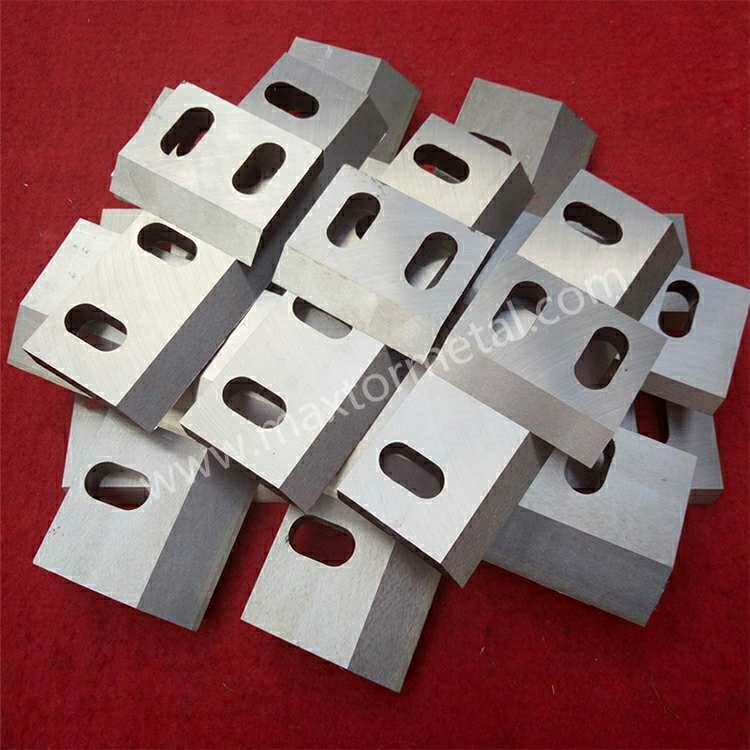
Eficiência da máquina
Velocidade de corte e rendimento
Você quer que seu triturador de plástico trabalhe rápido e manuseie muito plástico. A lâmina que você escolher muda a velocidade de corte da sua máquina. As lâminas originais são feitas sob medida para a sua máquina, cortando a uma velocidade constante. Isso ajuda a triturar mais plástico em menos tempo. Lâminas de reposição também podem funcionar bem, mas a velocidade pode variar. Se a lâmina não se encaixar corretamente ou usar materiais diferentes, sua máquina pode ficar mais lenta.
Consumo de energia
A lâmina certa ajuda sua máquina a consumir menos energia. Uma lâmina afiada e bem ajustada corta plástico com facilidade. As lâminas originais geralmente se ajustam perfeitamente, evitando que sua máquina precise trabalhar mais. Algumas lâminas de reposição podem fazer com que sua máquina consuma mais energia. Isso acontece se a lâmina não corresponder ao tamanho ou formato original. Sempre verifique se a lâmina está afiada e se ajusta bem para economizar energia.
Impacto da nitidez da lâmina na eficiência
Lâminas afiadas ajudam sua máquina a funcionar melhor. Se sua lâmina estiver cega, a máquina fica mais lenta e consome mais energia. Tanto as lâminas originais quanto as de reposição precisam ser verificadas com frequência. Troque lâminas cegas rapidamente para manter sua máquina funcionando perfeitamente. Cuidar bem das suas lâminas ajuda sua máquina a funcionar da melhor forma possível.
OEM vs. Aftermarket: Comparação de eficiência
Você pode notar diferenças entre lâminas originais e de reposição. As lâminas originais geralmente oferecem resultados estáveis porque se adaptam à sua máquina. As lâminas de reposição também podem funcionar bem, mas você precisa verificar a qualidade e o encaixe. Algumas pessoas dizem que as lâminas de reposição funcionam tão bem quanto. Outras notam problemas se a lâmina não se encaixar corretamente.
Vida útil da lâmina
Qualidade e dureza do material
O tipo de metal e a dureza da lâmina influenciam sua durabilidade. As lâminas originais (OEM) costumam usar aço resistente com a dureza correta. Muitas lâminas de reposição usam bons materiais, mas algumas usam metal mais macio. Sempre observe os detalhes antes de comprar uma lâmina nova.
Tratamento térmico e revestimento de superfície
Calor e revestimentos especiais tornam as lâminas mais resistentes. As lâminas originais geralmente recebem esses tratamentos para maior durabilidade. Algumas lâminas de reposição também possuem esses recursos. Esses tratamentos ajudam as lâminas a permanecerem afiadas e a não se desgastarem rapidamente.
Vida útil típica: OEM vs. mercado de reposição
As lâminas originais geralmente duram mais porque se adaptam à sua máquina e usam materiais resistentes. As lâminas de reposição podem durar muito tempo se você comprar de um bom vendedor. Se você escolher uma lâmina barata, poderá precisar substituí-la com mais frequência.
Fatores que afetam a longevidade da lâmina
Muitas coisas podem fazer com que as lâminas se desgastem mais rápido. Se você colocar a lâmina incorretamente, usar plástico sujo ou pular a limpeza, ela não durará muito. Siga sempre os passos corretos ao colocar uma lâmina nova. Mantenha sua máquina limpa e verifique as lâminas com frequência.
Frequência de manutenção e substituição
Inspecione suas lâminas com frequência para verificar se estão gastas. Troque-as quando ficarem cegas ou quebradas. Cuidar bem das lâminas ajuda sua máquina a funcionar sem problemas. Usar a lâmina certa e mantê-la em boas condições proporciona os melhores resultados.
Cost and Value
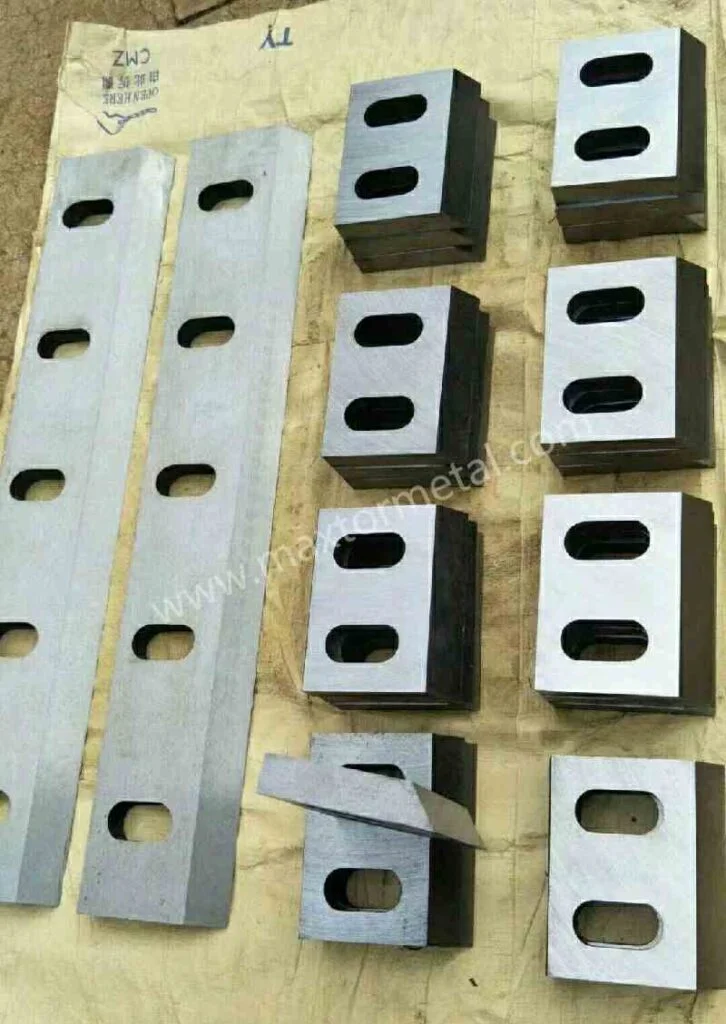
Custo inicial
Estrutura de preços de lâminas OEM
Ao escolher lâminas originais, você paga mais por boa qualidade e um encaixe perfeito. O preço é mais alto devido a verificações cuidadosas e à marca. Você também recebe garantia e assistência do fabricante. Esses fatores fazem com que as lâminas originais custem mais no início.
Estrutura de preços de lâminas de reposição
Lâminas de reposição geralmente custam menos. Muitos vendedores oferecem descontos nessas lâminas. Há muitas opções, então você pode encontrar uma que se encaixe no seu orçamento. Algumas lâminas de reposição usam materiais diferentes, o que pode alterar o preço.
Principais fatores que afetam o custo inicial
Muitas coisas mudam o quanto você paga por uma lâmina nova:
- Tamanho e espessura da lâmina
- Tipo de aço ou outro material
- Quantas lâminas você compra
- Quão conhecido é o vendedor
Se você comprar muitas lâminas de uma vez, poderá pagar menos por cada uma.
Comparação típica de faixas de preço
As lâminas originais (OEM) costumam ser mais caras do que as de reposição. Por exemplo, uma lâmina original pode custar o dobro do preço de uma de reposição. Mas a lâmina mais barata pode não durar tanto ou ter um desempenho tão bom.
Impacto de pedidos em massa e relacionamentos com fornecedores
Comprar muitas lâminas de uma só vez pode reduzir o preço de cada uma. Se você conhece bem o seu vendedor, pode conseguir melhores ofertas. Alguns vendedores oferecem descontos ou entrega mais rápida para clientes que compram com frequência.
Valor de longo prazo
Vida útil e durabilidade da lâmina
Uma lâmina que dura mais oferece um melhor custo-benefício. Muitas lâminas originais duram muito. Algumas lâminas de reposição também duram bastante, mas você deve verificar a qualidade antes de comprar.
Frequência de manutenção e substituição
Se a sua lâmina se desgastar rapidamente, você precisará trocá-la com mais frequência. Isso significa que você gastará mais tempo e dinheiro consertando sua máquina.
Impacto no tempo de inatividade da máquina e na produtividade
Toda vez que você para sua máquina para trocar uma lâmina, você perde tempo. Parar demais pode prejudicar o seu negócio. Uma boa lâmina ajuda sua máquina a continuar funcionando e reduz as paradas.
Custo Total de Propriedade (TCO)
Você deve considerar o custo total, não apenas o preço da lâmina. O TCO (Custo Total de Propriedade) refere-se ao preço da lâmina, custos de conserto, novas lâminas e trabalho perdido devido à parada da máquina.
Considerações sobre o retorno do investimento (ROI)
Uma lâmina mais cara pode economizar dinheiro no futuro, se durar mais e manter sua máquina funcionando. Pense sempre no preço inicial e no valor ao longo do tempo antes de escolher.
Dica: Pense no preço e no valor que você obtém ao longo do tempo. Isso ajuda a escolher a melhor lâmina para o seu triturador de plástico.
Warranty and Support
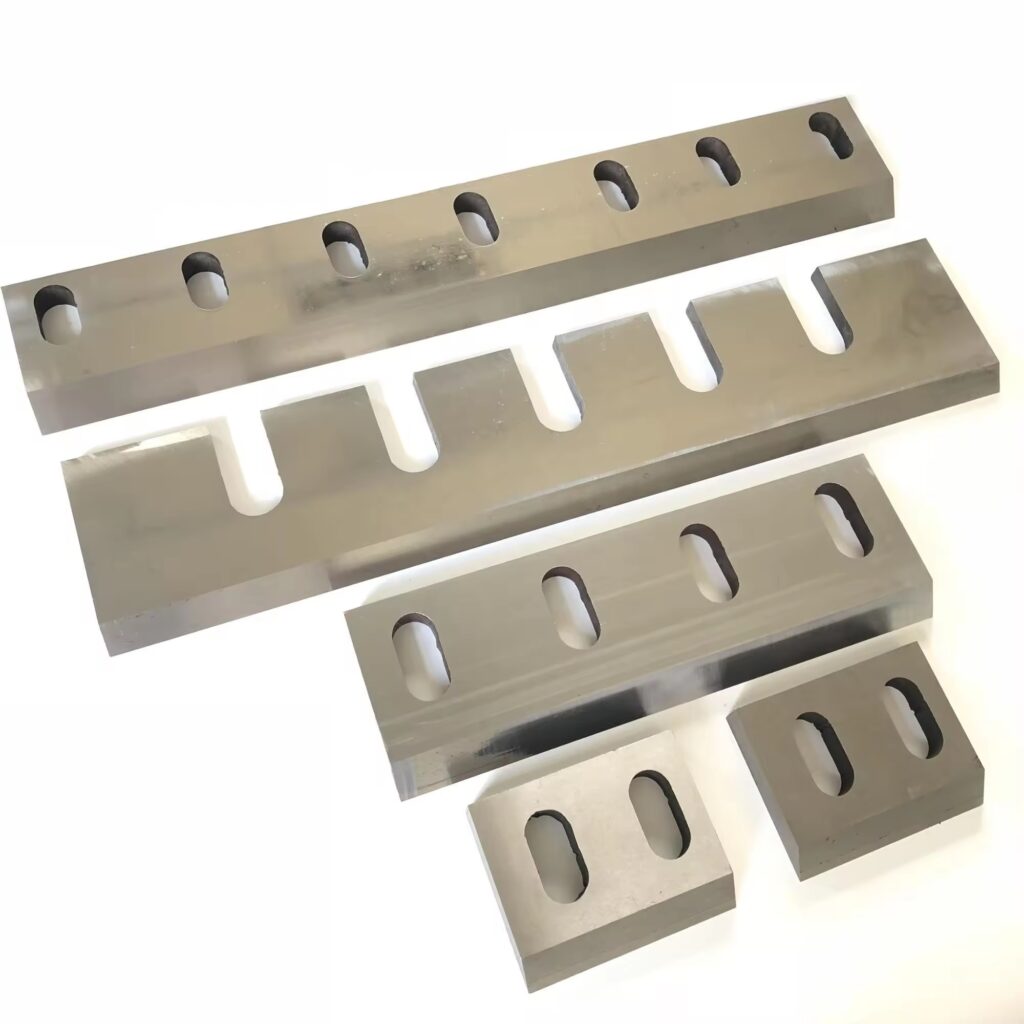
Garantia OEM
Âmbito e duração da cobertura
Ao escolher peças originais, você obtém uma garantia clara. A maioria das garantias protege você caso a lâmina apresente algum problema ou seja fabricada incorretamente. A garantia geralmente dura seis meses ou um ano. Você sabe o que está coberto e quanto tempo dura.
Processo de Reivindicação e Documentação
Se precisar usar a garantia, os passos são simples. Você apresenta o recibo e o número de série. A empresa verifica sua reclamação e informa o que fazer. Isso ajuda a resolver os problemas rapidamente.
Suporte Técnico do Fabricante
Você pode ligar para a empresa para obter ajuda. Eles respondem a perguntas sobre como instalar a lâmina ou resolver problemas. A equipe conhece bem sua máquina e as peças originais. Você recebe bons conselhos quando precisa.
Políticas de Substituição e Reparo
Se a sua lâmina quebrar durante a garantia, você pode obter uma nova ou consertá-la. A empresa informa o que fazer e quanto tempo levará. Você não precisa adivinhar o que vai acontecer. Isso ajuda a manter sua máquina funcionando.
Limitações e Exclusões
Alguns itens não são cobertos pela garantia. Se você usar a lâmina incorretamente, trocá-la ou se ela simplesmente se desgastar, a garantia não ajuda. Sempre leia a garantia para saber o que está incluído.
Dica: Guarde seus recibos e documentos do produto em segurança. Isso facilita a utilização da garantia caso precise usá-la.
Garantia de reposição
Termos e cobertura da garantia
As garantias de reposição nem sempre são as mesmas. Alguns vendedores oferecem boas garantias, mas outros não. Sempre pergunte o que está coberto antes de comprar.
Procedimentos de Reclamação e Capacidade de Resposta do Fornecedor
Os passos para fazer uma reclamação podem variar de acordo com o vendedor. Algumas empresas atendem você rapidamente, mas outras são lentas. Pode ser necessário fornecer mais documentos.
Disponibilidade de Suporte Técnico
O suporte dos vendedores de reposição pode variar. Alguns oferecem um bom suporte, mas outros não respondem rapidamente. Verifique as avaliações ou pergunte a outras pessoas sobre o suporte.
Políticas de substituição e reembolso
As regras para a troca de lâminas ou a devolução do seu dinheiro nem sempre são claras. Alguns vendedores permitem a devolução das lâminas facilmente, mas outros têm regras rígidas. Certifique-se de conhecer as regras antes de comprar.
Limitações e riscos comuns
As garantias de reposição podem ter limites maiores. Você pode esperar mais tempo ou ter problemas com a cobertura. Escolha sempre revendedores em que você confia para reduzir seus riscos.
Availability and Lead Time
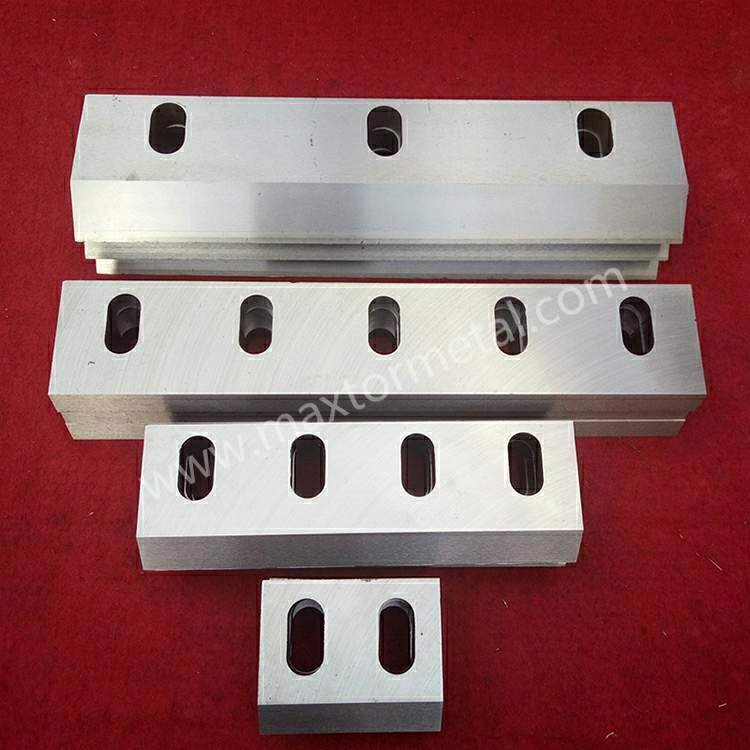
Fornecimento OEM
Canais de fornecimento e processo de pedidos
Você pode comprar lâminas originais de revendedores ou do fabricante. Verifique primeiro o modelo e os números de peça da sua máquina. Isso ajuda a encontrar a lâmina certa para a sua máquina. Revendedores e fabricantes precisam dessas informações antes de enviar seu pedido.
Prazos de entrega típicos
As lâminas originais podem levar dias ou semanas para chegar. Se a lâmina estiver em estoque, você a receberá mais cedo. Caso contrário, terá que esperar mais. A distância de envio e o momento da fabricação também influenciam o tempo de espera.
Fatores que afetam a entrega do OEM
Muitos fatores influenciam a rapidez com que você recebe sua lâmina original. Lâminas personalizadas levam mais tempo para serem produzidas. O envio de outros países pode levar dias ou semanas. Se não houver muitas lâminas, a entrega pode ser lenta. Sempre pergunte quanto tempo levará antes de fazer o pedido.
Trabalhando com revendedores autorizados vs. fabricante direto
Você pode comprar de um revendedor ou do fabricante. Os revendedores podem atendê-lo mais rapidamente se estiverem por perto. O fabricante pode oferecer novos modelos e atualizações. Ambas as opções são boas, então escolha a que funciona melhor para você.
Suprimento de reposição
Rede de Fornecedores e Disponibilidade de Estoque
As lâminas de reposição vêm de diversos vendedores em todo o mundo. Você pode encontrar vendedores perto de você ou em locais distantes. Isso significa que você pode encontrar lâminas em estoque com mais frequência.
Velocidade e flexibilidade de entrega
Os vendedores de peças de reposição costumam enviar as lâminas muito rápido. Alguns as enviam no mesmo dia ou no dia seguinte, se as tiverem. O envio rápido ajuda você a consertar sua máquina rapidamente.
Variabilidade da marca e do fornecedor
Existem muitas marcas e vendedores de lâminas de reposição. Alguns vendem lâminas boas, outros não. Sempre leia as avaliações e tire suas dúvidas antes de comprar.
Riscos e considerações no fornecimento de peças de reposição
Comprar lâminas de reposição pode ser arriscado. Alguns vendedores vendem lâminas falsas ou defeituosas. Lâminas defeituosas podem danificar sua máquina. Escolha sempre vendedores em quem você confia para manter sua máquina segura.
Dica: Sempre verifique a rapidez com que as lâminas são enviadas e se o vendedor é confiável antes de comprar lâminas para seu triturador de plástico.
Lâminas Personalizadas e Nanquim Metal Industrial
Benefícios da personalização
Lâminas personalizadas oferecem mais controle sobre o seu processo de trituração de plástico. Você pode escolher o tamanho, o formato e o material exatos que se adaptam à sua máquina e ao seu trabalho. Isso significa que você obtém melhores resultados e menos desperdício. Ao usar uma lâmina feita sob medida para as suas necessidades, você vê melhorias reais no seu trabalho.
Veja como lâminas personalizadas podem mudar suas operações diárias:
| Métrica | Antes da personalização | Lâmina personalizada Metal de Nanquim | Melhoria |
|---|---|---|---|
| Velocidade de corte | N / D | Aumentou em 22% | +22% |
| Vida da lâmina | 2 semanas | 6 semanas | +200% |
| Trocas de lâmina por semana | 10 | 3 | -70% |
| Taxa de sucata (redução de desperdícios) | 6.5% | 2.2% | -66% |
| Tempo de inatividade devido ao desgaste da lâmina | 4 horas/semana | 1 hora/semana | -75% |

Você pode ver que lâminas personalizadas ajudam você a trabalhar mais rápido, reduzir o desperdício e gastar menos tempo trocando peças. Em um caso, uma empresa do setor de papel usou lâminas personalizadas e economizou $40.000 por ano reduzindo o desperdício de material. A personalização permite resolver problemas que as lâminas comuns não conseguem resolver.
Dica: Lâminas personalizadas são uma escolha inteligente se você deseja aumentar a eficiência e reduzir custos em sua planta.
Soluções Nanquim Metal
Nanquim Metal destaca-se como um fabricante confiável de lâminas para britadores de plástico, com 20 anos de experiência. Esta empresa conquistou o respeito do setor por sua sólida equipe de design e produção. Você obtém lâminas feitas de materiais de alta qualidade, como D2, M2, SKD-11 e carboneto de tungstênio e cerâmica. Cada lâmina passa por um tratamento térmico avançado e revestimentos especiais para maior durabilidade e melhor corte.
Você pode encomendar lâminas originais ou solicitar uma solução personalizada. A equipe trabalha com você desde o primeiro contato até o produto final. Eles realizam rigorosos controles de qualidade em todas as etapas. Você recebe lâminas que se adaptam perfeitamente à sua máquina e atendem exatamente às suas necessidades. A Nanjing Metal oferece preços justos e serviços de importação facilitados, para que você possa se concentrar no seu trabalho.
Se você quiser saber mais ou precisar de uma lâmina personalizada, entre em contato com um engenheiro de vendas da Nanjing Metal. Contato entre em contato com eles hoje mesmo para começar a trabalhar em sua solução.
Guia de Decisão
Lista de verificação de seleção
Escolher a peça certa para o seu triturador de plástico pode ser confuso. Use esta lista de verificação para ajudá-lo a tomar uma decisão inteligente:
- Verifique o modelo da sua máquina e o tamanho da lâmina.
- Decida se você precisa de um ajuste perfeito ou se pode fazer ajustes.
- Pense no seu orçamento para agora e para o futuro.
- Observe com que frequência você substitui as lâminas.
- Pergunte se você precisa de garantia ou suporte extra.
- Pense em quão rápido você precisa que a lâmina seja entregue.
- Decida se você quer novos recursos ou formas personalizadas.
- Certifique-se de que o fornecedor é confiável e tem boas avaliações.
Tip: Write down your answers to each point. This will help you see which blade type matches your needs best.
Common Scenarios
You may face different situations in your plant. Here are some examples to guide your decision:
| Scenario | Melhor tipo de lâmina | Por que? |
|---|---|---|
| You want a perfect fit and long life | OEM | Exact match and strong warranty |
| You need to save money and get blades quickly | Aftermarket | Lower cost and fast delivery |
| Your machine has diffident needs or rare sizes | Personalizado | Tailored design for your application |
| You want to try new materials or features | Aftermarket or Custom | More options and innovation |
| You want less downtime and easy support | OEM or Custom | Reliable help and fewer problems |
When you pick plastic crusher replacement blades, you have choices. Think about these important things:
- OEM blades are high quality, fit perfectly, and have a good warranty, but they cost more money.
- Aftermarket blades from good brands can work as well as OEM blades and last long, but they cost less.
- Custom or aftermarket blades are easier to find and can have special features for different jobs.
- Testing and knowing the brand’s reputation help you make sure aftermarket blades are good.
Most of the time, use OEM blades for important machine parts and use trusted aftermarket blades to save money. If you need a blade that fits just right, talk to a professional plastic crusher replacement blades maker.
Perguntas frequentes
What is the difference between OEM and aftermarket crusher blades?
OEM blades are made by the company that built your machine. Aftermarket blades are made by other companies. OEM blades almost always fit just right. Aftermarket blades can cost less and give you more options.
How do I know if a replacement blade will fit my machine?
Look in your machine’s manual to find the blade size and shape. Measure your old blade to be sure. Check if the new blade matches these numbers. If you are not sure, ask the seller for a drawing.
How often should I replace plastic crusher blades?
Change blades if they get dull, cracked, or cut badly. Look at your blades often to check their shape. If you use your machine a lot or cut hard stuff, you may need to change blades more.
Can I get custom blades for special machines?
Yes, you can buy custom blades for your machine. Custom blades help if you need a special size or shape.
Where can I get expert advice on choosing the right blade?
You can talk to a sales engineer for help.
Veja também
Quando substituir as lâminas de plástico do triturador: sinais de desgaste e dicas de manutenção
Como fazer a manutenção e afiar as lâminas do granulador de plástico

